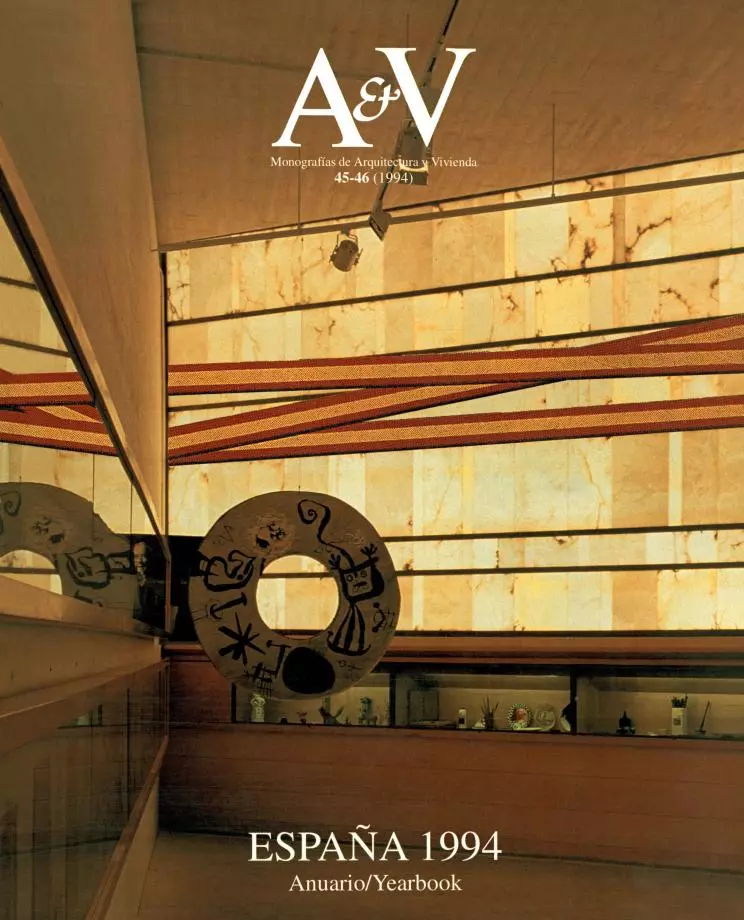Beatific Spanish Architecture

The fallacy of a yearbook is that it tends to unify what is really dispersed. At a time when our perception of things - of architecture, for example - is totally media-tized, an arbitrary selection such as that presented by this publication does not so much tempt us to come up with another, as to try to grasp what it is that can be read in between the lines. After all, any anthology of Spanish architecture is soon destined to become canonical, by virtue of the homologating effect of the actual selection.
Even when the selection is explicitly plural, geographical, generational and thematic, the more deliberating reader will try to scrutinize the interrelationships that are established between the works presented and which allow them to be taken as a panorama representing the more interesting aspects of current Spanish architecture.
But what are the transversal lines that cross from one end to the other, from one city to another, from young architects to old masters? In my opinion, if it were possible to look at things from the vantage point of the distant observer, thus forgetting family histories, the common features would still be evident.
First and foremost, there is a spongy capacity to learn from all architectures. Not from all things, as in the Venturian experiment, but more internally, from all architectures. In a country of few theoretical manifestations and timid radical experiments, it is surprising to find that the primary material of architecture is the architecture itself. In other cultural contexts, such abundance of self-reference and re-flexion is not that easy to find.
Ours is an architecture of connoisseurs, for the initiated. Not because it orbits within the pedantic universe of citations, of disconcerting and occasionally literary allusions, but because Spanish architecture builds on the images, figures, gestures and textures of other architectures without whose prior existence the complex interplay of narrations made in heretofore unfurled languages would be intolerable.
This is not a matter of eclecticism, which would be an overly cynical and pessimistic attitude. Neither is it a matter of mimicry: the pure imitation of other currents or ‘styles', as people a century ago would have preferred to say. What characterizes Spanish architecture today is its marination and digestion of current architecture from all over the world, its free re-elaborations and capacity to build new works that can be understood as ‘metadiscourses9, as languages not based on a crude and direct confrontation with reality but always resting on the complicity of what is already elaborated and reconsidered.
But it is also important to note that this self-referential character runs parallel to a second common feature: preciosity. Ours is an architecture of bullfighters: elegant, exquisitely polished, and rather gratuitous, not in the sense of formalistic banality but in that which has to do with grace, gracility and gratifyingness.
More than an architecture of ideas, it is an architecture of experiences. It is never programmatic. Unique on every occasion, it is always a skillful recount of the numerous demands that are patent in the place, in the typology, in the composition, in the economy, in the apparent evidence.
Given the present state of culture where nihilism, horror, vulgarity and obsolescence predominate, Spanish architecture can no longer strive for beauty as a consummate value. No one can nowadays. But between the endeavor to offer great absolute words and the resignation to a sea of shapes and anonymous languages, incoherent and insignificant, the architectures presented in this yearbook - each in its own way, in a sweeping instant - try to offer positive, pleasant, optimistic words.
Few other architectures in the world give so much attention to the finishing, to the small scale, to detail, which becomes a new episode. From the most Baroque to the most purist, from the most aggressive to the most magnanimous, whether in public or private commissions and in small or large scale, Spanish architects of today are neither laconic nor impenetrable.
Theirs is a gay science, a thorough representation in which redundancies and excesses, affirmations and negations, diversities and pluralisms give rise to smiling architectures, self-satisfied to no small degree, still under the wings of an enlightened glee that an aesthetic Schillerian education of man holds as a promise.
In the paradises of Spanish architecture these days, there are no signs of violence or marginalization, nor of economic crises and ecological conflicts. As Madrid's dear old mayor Tierno Galván would have said, we are still living a culture of spectacle and have not yet apparently suffered the loss of meaning that accompanies the of civilization of trivialization.






